







Patch Scenery
No, it’s not snowing on the Patch, but the inclement weather over Christmas in 2009 provided a good excuse to get started on some. Since I had already scratch-built the fuel stands and sand tower, that seemed like the place to start.
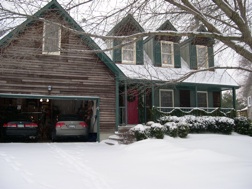
Spreading Dirt
From photos and personal observation, the area where First Street Yard was mainly dirt. No ballast or grass, just the plain granite “dirt” you see in Southern California. It is a grayish-tan, more on the tan side. On previous layouts, such as the Surf Line, I used Arizona Rock and Minerals’ scenic soil Kaibab Limestone and Cajon Sandstone. The former is a light tan and the latter has more red or orange in it. Both are good colors, but I wanted something more gray.
Arizona Rock and Minerals recently came out with their No. 2000 Industrial Dirt, which is a fine, grayish-tan mix. It looked like the right color. After spreading it around between the tracks and ties, literally burying the ties, I wet it thoroughly with Isopropyl Alcohol and used a mixture of 4:1 water/white glue (not the 50/50 on the bottle in the photo), liberally soaking the dirt. Once it dried, I had a nice area where the tracks and ties are in the dirt.
For more information on ballasting yard tracks, see Model Railroader Special Issue “How to Build Realistic Layouts: Freight Yards,” which you can order here.
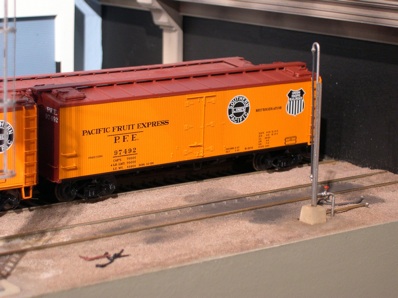
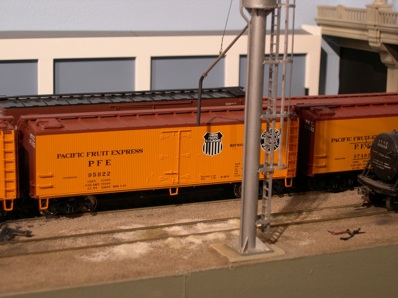
After everything dried, I added white beach sand to represent the spilled sand from the sand tower. I don’t know anyone who makes this kind of sand commercially, mine was from an ashtray.
To represent Diesel fuel and oil stains, I used diluted Polly Scale Grimy Black and weathering powders. I found the powders worked just as well as the liquid and was less messy.
The sand tower is from American Limited Models, the fuel stands (one for unloading tank cars and one for filling up Diesels) were scratchbuilt from Santa Fe plans, which you can download.
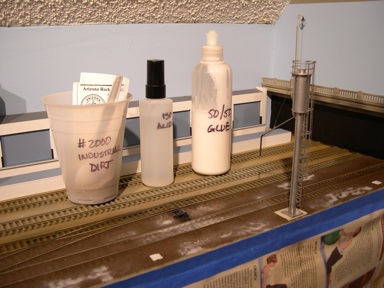
I only did the area around the Diesel switcher servicing track to see how things would work. While wet after being soaked with alcohol and glue, the ground looks very dark.
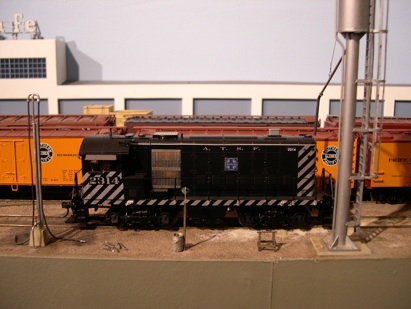

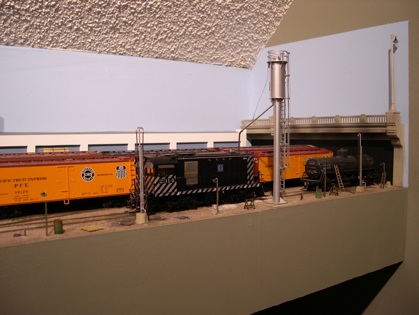
With a few details such as pallets, ladders, oil drums, waste cans, etc., the area begins to look like a real place. The Santa Fe built this fueling facility at First Street Yard in 1947 to handle the then-new Diesel switchers. I’ll probably have to add a Plexiglas shield to prevent damage to layout edge items during operating sessions.
The fueling stand is at left. The small vertical object in the middle is a light pole. Railroad facilities in the past were rather crude affairs compared to today’s spic-and-span facilities, a legacy of rules and laws governing the workplace. The location of the model service facility is in the approximate place of the prototype, across from the Freight House, just south of the First Street Viaduct.
This is where tankcars of Diesel fuel are unloaded, either from the top through the dome (using a brass tube that you can see leaning on the sawhorse) or through the bottom outlet. I need to add a blue flag!
